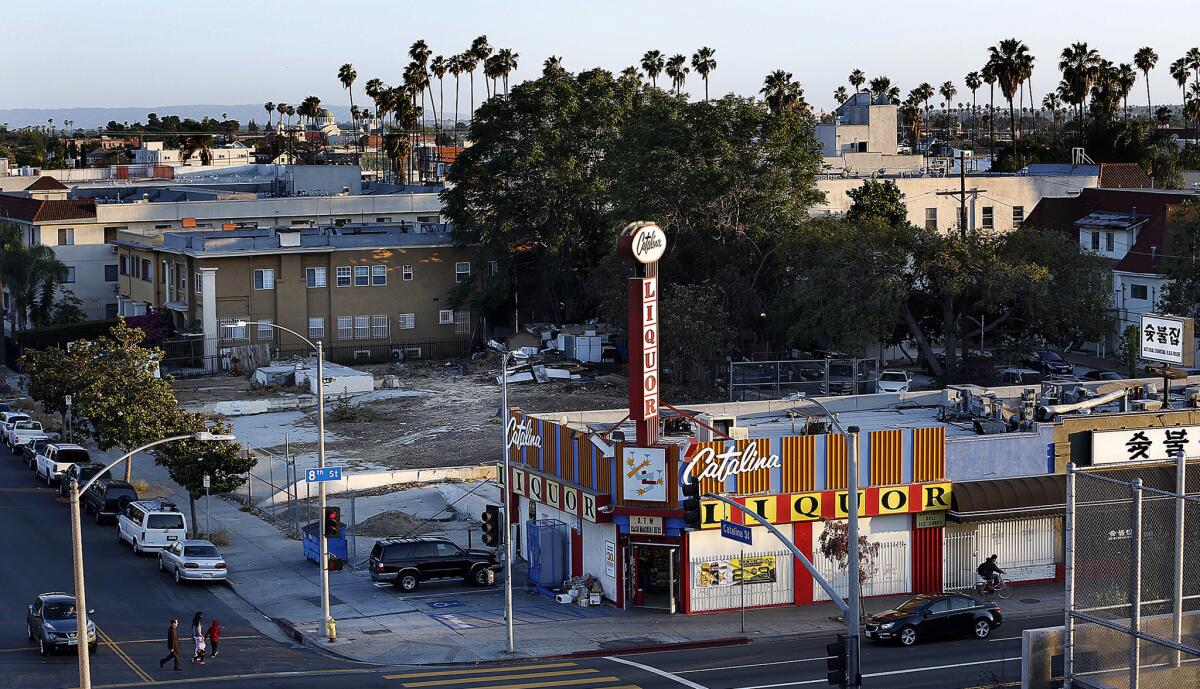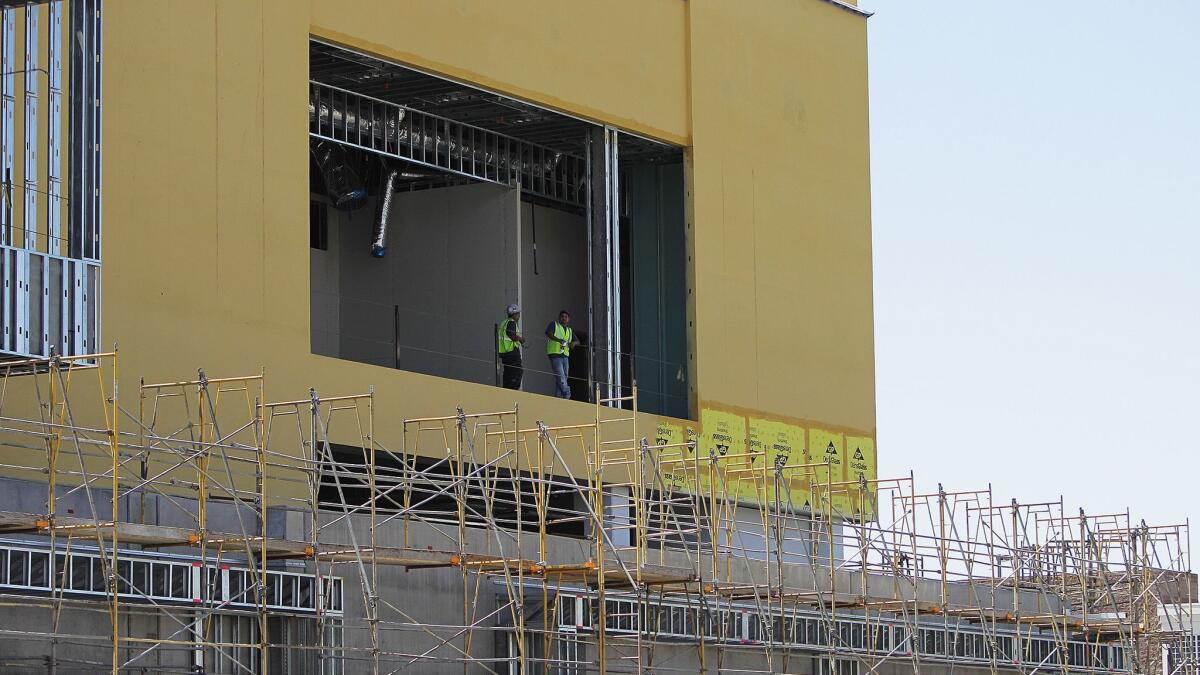Judge puts the brakes on Koreatown apartment tower

A judge has overturned Los Angelesâ approval of a 27-story apartment tower in Koreatown, handing the city yet another defeat over its handling of real estate projects.
Superior Court Judge Joanne OâDonnell ordered a full environmental impact report for the 269-unit residential project, saying more study is needed to assess the towerâs effects on traffic, public safety services and land use patterns.
In a four-page ruling written last week, OâDonnell said the city did not obtain input from the cityâs police and fire departments about services that would be needed by future tower residents. She also noted that the Los Angeles Unified School District, Caltrans and other agencies expressed concern about car trips generated by the project.
âThe project places a high-density, mixed-use project onto residential streets and could have a significant impact on access and spillover traffic,â she wrote.
The decision comes nearly three years after Mayor Eric Garcetti and the City Council approved the project, which is planned on Catalina Street just south of 8th. They did so despite opposition from Garcettiâs own appointees on the city Planning Commission, who warned that the tower would loom over other nearby apartment buildings, which range from one to four stories.
Representatives of Garcetti and City Atty. Mike Feuer had no immediate comment. Michael Hakim, the projectâs developer, said he is looking at an array of options, including a possible redesign of the project to allow a hotel.
âIf an EIR is required, then we can do an EIR,â he added.
When the tower was approved, Garcetti said it would bring much-needed housing to Koreatown, an area of the city with a subway and multiple bus routes. Opponents, in turn, accused the city of delivering a financial gift to the developer, rewriting the cityâs planning rules to double the number of residential units that could be built on the site.
The project âwas totally inappropriate for its location,â said Laura Lake, board member with Fix the City, one of the groups that filed a lawsuit over the tower. âThereâs a place for high density [housing]. This was not it.â
Grace Yoo, co-founder of the nonprofit Environmental Justice Collaborative, which also sued, said the cityâs elected officials disregarded years of warnings from the Planning Department staff. âTheir attitude was âTake us to court,ââ Yoo said. âSo we did, and we won.â
The ruling is the latest in a string of legal defeats for City Hall on planning matters.
In recent years, judges have struck down the approval of a three-story Target shopping center, the 299-unit Sunset and Gordon apartment tower and the Millennium project, which would add two skyscrapers to properties near the landmark Capitol Records building. All three are in Hollywood.
City officials said the Millennium case is now at the Court of Appeal, as is Round 2 of the Hollywood Target legal battle. The Planning Department is preparing new environmental documents for the Sunset and Gordon project.

The agency is also conducting more review of the Hollywood Community Plan, which was invalidated by a judge in 2013. The plan, which seeks to allow taller, denser buildings near transit corridors, was also challenged by Fix the City.
The cityâs legal team fared somewhat better with the legal challenge filed over 8150 Sunset, a mixed-use project planned on the Sunset Strip. In that case, a three-judge panel affirmed the cityâs decision to allow a midcentury bank building to be demolished to make way for the 229-unit development.
Yet even that decision has presented complications for the city. In their ruling, the judges found the city failed to hold a required hearing on a plan for closing a right-turn lane that abuts the 8150 Sunset site.
A Feuer spokesman declined to discuss the ramifications of that ruling. But foes of the project say the decision will force the city to rescind its approvals of 8150 Sunset so that the review of the right-turn lane issue can be conducted.
In Koreatown, Hakimâs project went through the cityâs review process on two separate occasions. The project â envisioned originally as 35 stories â was rejected in 2009 by the nine-member Planning Commission, made up of appointees of then-Mayor Antonio Villaraigosa.
Hakim and his company, Colony Holdings, shaved eight stories off the project and sent it back to the commission, this time made up of Garcetti appointees. Despite the reduction in size, the commission rejected it again in 2014, saying it was out of scale with its immediate surroundings.
One commissioner compared the project to a tumor, calling it âwildly inappropriateâ for the location. Another said the tower was a good project but in the wrong place.
Garcetti, using a little-known procedure in the City Charter, came out against the commissionâs decision â a move that lowered the number of votes needed for council approval from 12 to 10. The council backed it on an 11 to 0 vote.
Hakim argued at the time that the project would align with Garcettiâs goal of building 100,000 new homes by 2021. Council President Herb Wesson, who represents Koreatown, said it would revitalize the area.
In a statement on Tuesday, Wesson spokeswoman Vanessa Rodriguez said the council president respects OâDonnellâs ruling.
Twitter: @DavidZahniser
More to Read
Sign up for Essential California
The most important California stories and recommendations in your inbox every morning.
You may occasionally receive promotional content from the Los Angeles Times.











